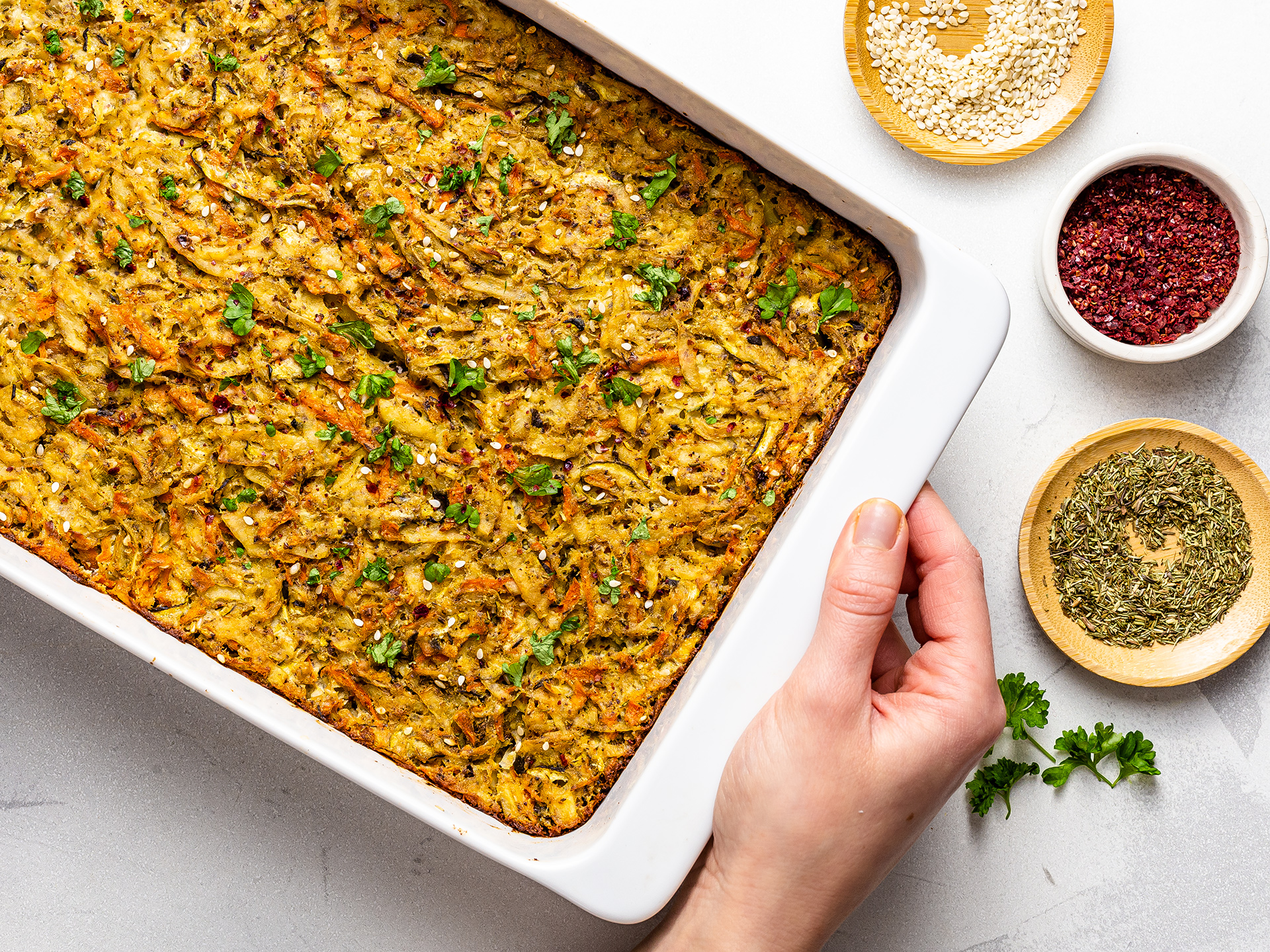We recently started tackling a few Jewish recipes to make them egg-free and vegan, like the krantz cake (chocolate babka). What an exciting and historical cuisine! Today, we are making vegan kugel with potatoes and other yummy veggies, without using eggs. It's great for folks allergic to eggs or folks that want to try a delicious plant-based casserole bursting with Middle-Eastern flavours.
There are two major variations of the kugel casserole—those made with noodles, and those with potatoes. We opted for the latter and added in zucchini and carrots for extra nutrients and flavour.
Kugel is pareve, which roughly means "made without dairy, meat, or their derivatives" in Jewish dietary laws (kashrut). Eggs are allowed though, so pareve and vegan aren't the same thing. In other terms, pareve is close to the ovo-pescatarian diet.
To make this kugel vegan, we replaced eggs with tofu. Note: we aren't kashrut experts, but based on our research Tofu is not allowed during the Passover (Pesach) festivity. Soybeans are permitted, but tofu isn't. If you follow this festivity and adhere to kashrut to the letter, then you'll know what to do.
A portion of this potato casserole will provide you with 240 calories, 25% RDI for proteins, 20% RDI for fibres, and only 7% RDI for carbs. It's a balanced meal that will keep hunger at bay for hours.
We loved this recipe. We made so much we ate it for a full week! That's one of the advantages of making kugel without eggs. The lack of animal products means that it can keep in the fridge well up to a week — perfect batch-cooking material or great for a big family!
Can you make kugel in advance?
Yes, you can. This Jewish casserole-style dish is perfect to prepare ahead of time for a family or friends gathering.
You can make the potato batter in advance, pour it in the casserole, and keep it in the fridge wrapped in cling film until you are ready to bake it.
Alternatively, you can pre-cook the kugel and then either reheat it later on or serve it cold.
Is kugel served warm or cold?
You can enjoy this potato pudding either warm or cold.
For example, if you're having a family dinner, we recommend serving it warm from the oven for a rich, comforting meal.
Instead, if you made it in advance for a party or outdoor lunch, or if you have any leftovers, then it's a great idea to serve it cold. It will taste just as delicious.
How do you make kugel without eggs?
While the classic Jewish Kugel is dairy-free (pareve), it isn't vegan as it contains eggs or egg noodles.
In this casserole dish, the eggs are used to bind the batter ingredients, provide structure, and of course, flavour.
Making Kugel vegan is incredibly easy with the help of firm tofu. Tofu is an excellent egg replacement as it's rich in proteins. Also, it blends into a smooth cream and gives structure to the batter when baked.
In this recipe, we recommend using firm tofu rather than then silken one to get a thicker, denser result.
Which vegetables are used in the Jewish kugel?
Potatoes are a staple ingredient in the Kugel, which in fact is also known as potato pudding. However, some variations include other vegetables, such as cabbage, zucchini, spinach, and carrots.
We decided to make our vegan kugel with a combo of veggies to give you a colourful and healthy dish. We used two parts potatoes, one part zucchini, and one part carrots.
Although very nutritious, potatoes are a starchy vegetable and therefore higher in carbs than zucchini or carrots. By replacing half of the potatoes with these other veggies, we decreased the overall carb content of the recipe — and made it even cuter.
What do you eat with kugel?
Kugel is a staple dish on occasions such as Shabbat and holidays, where it's usually served as a side dish to meat meals and enjoyed either warm or cold.
However, we believe this potato pudding is absolutely perfect as a stand-alone meal. It contains proteins from tofu, a generous amount of veggies, and healthy fats from olive oil.
One 240kcal serving covers 24% of your RDI for proteins, 19% RDI for fibres, and only 6% RDI for carbs. You could pair it with warm flatbread, a serving of hummus or a handful of nuts to make a balanced meal out of it.
Ingredients
| Kugel | |
| Potatoes | 480 g |
| Zucchini | 280 g |
| Carrots | 280 g |
| Firm Tofu | 400 g |
| Vegetable Stock | 100 mL |
| Nutritional Yeast | 3 tbsp |
| Brown Onion | 1 |
| Extra Virgin Olive Oil | 80 mL |
| Starch (Potato or Corn) | 2 tbsp |
| Za'atar | |
| Dried Thyme | 1 tbsp |
| Sumac | 1 tbsp |
| Sesame Seeds | 1 tbsp |
| Ground Cumin | 1/2 tbsp |
Step 1
Shred the potatoes, zucchini, and carrots using a box grater.
We recommend keeping the potatoes skin-on to get extra fibres, but you can also peel the skin if preferred.
Collect the shredded zucchini and carrots in a bowl and set them aside.
Squeeze the grated potatoes over a colander or use a cheesecloth to remove excess water. Then, add them to bowl with the other veggies.
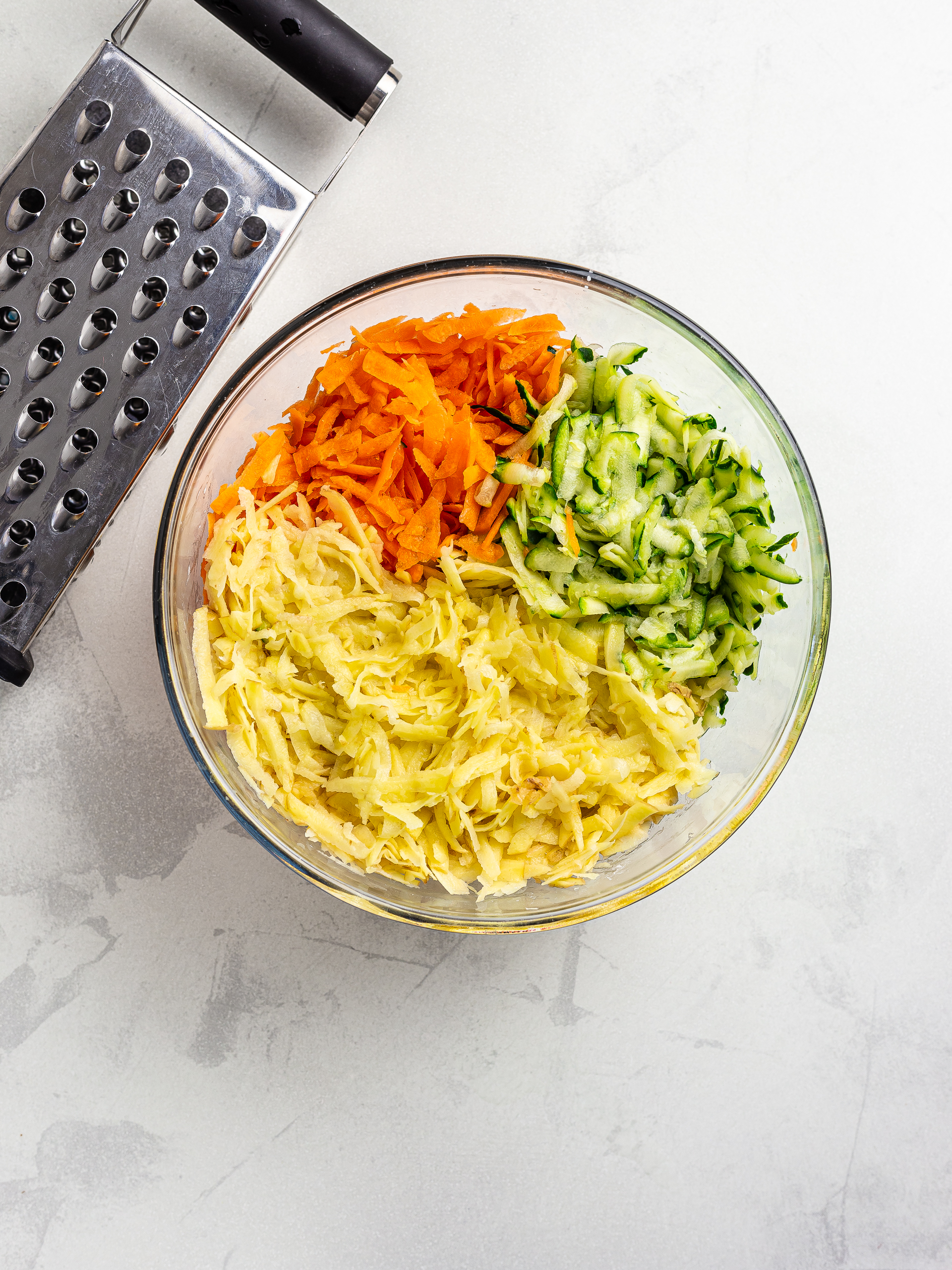
Step 2
Next, let's prepare our egg replacement for the kugel.
Rinse and squeeze the tofu to remove excess water.
Then, add it to a food processor followed by the vegetable stock and nutritional yeast. Blitz all until smooth and creamy.
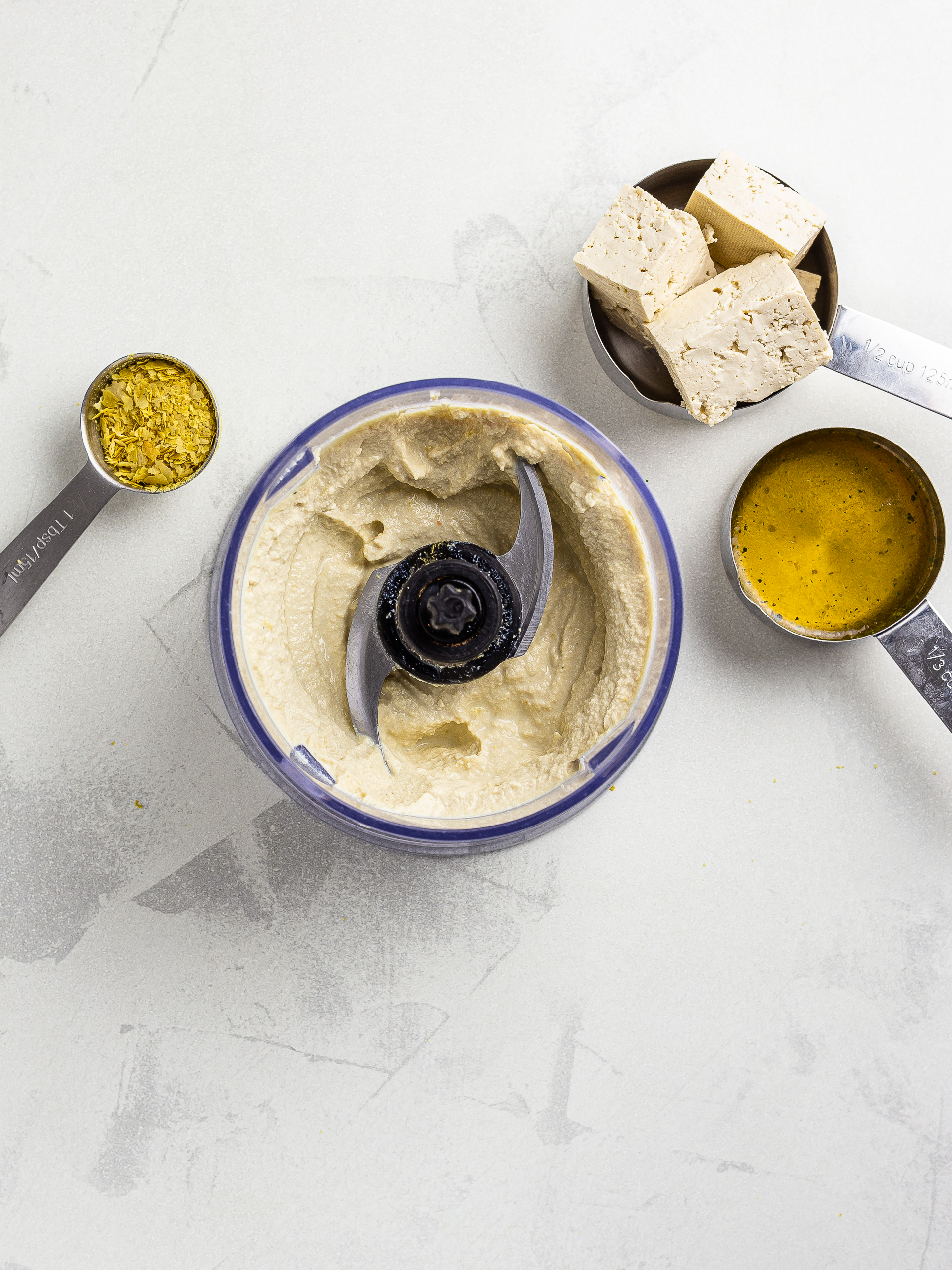
Step 3
Now, we'll make the classic Israeli Za'atar spice mix that we'll use to season the kugel.
In a small bowl, combine dried thyme, sumac flakes, sesame seeds, and ground cumin.
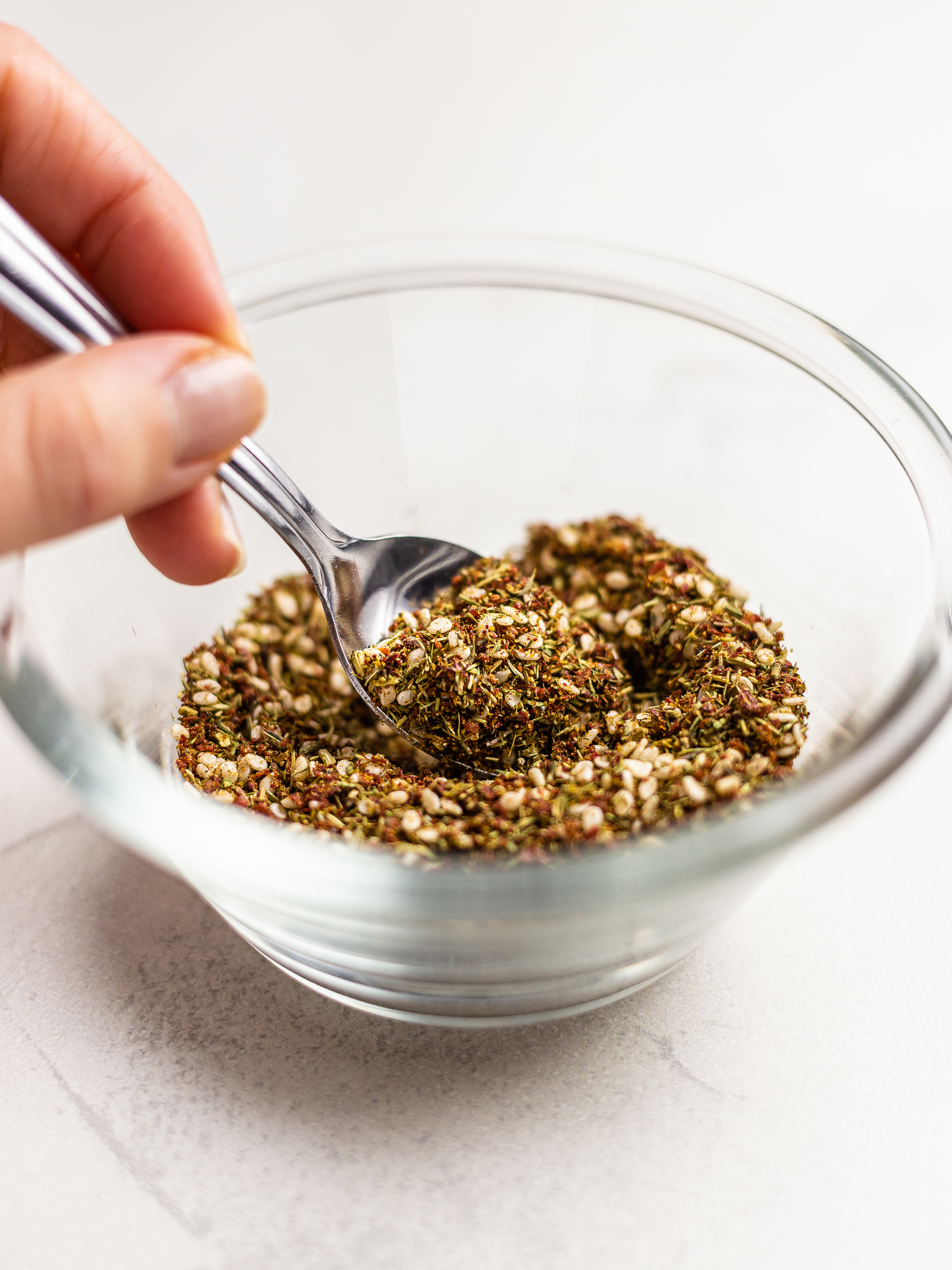
Step 4
Next, add the tofu purée, spice mix, finely chopped onions, and olive oil to the grated vegetables.
Whisk the starch with a bit of water in another bowl until it's dissolved and then add it to the other ingredients.
Stir until everything is well incorporated and season with salt and pepper to taste.
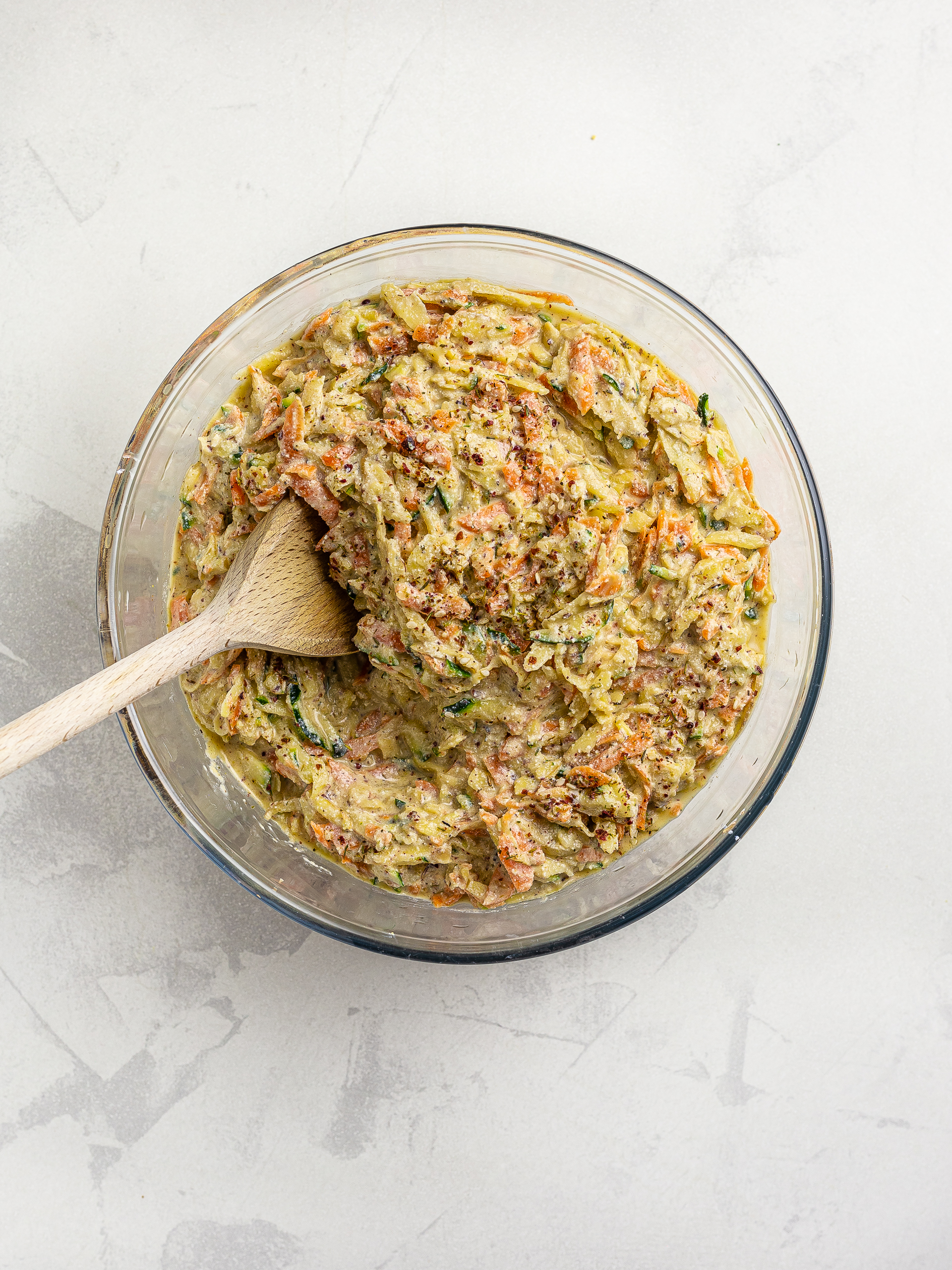
Step 5
Take a 28cm x 20cm (11″ x 8″) casserole dish and grease it with olive oil. If your tray is significantly different in size than ours, you may want to adjust the quantity of ingredients accordingly.
Then, transfer the kugel batter into the prepared dish and level it with a spatula or the back of a spoon (1).
Finally, bake the kugel for 1 hour in the preheated oven at 200°C (390°F) in static mode.
Enjoy this vegan potato casserole warm from the oven or cold.
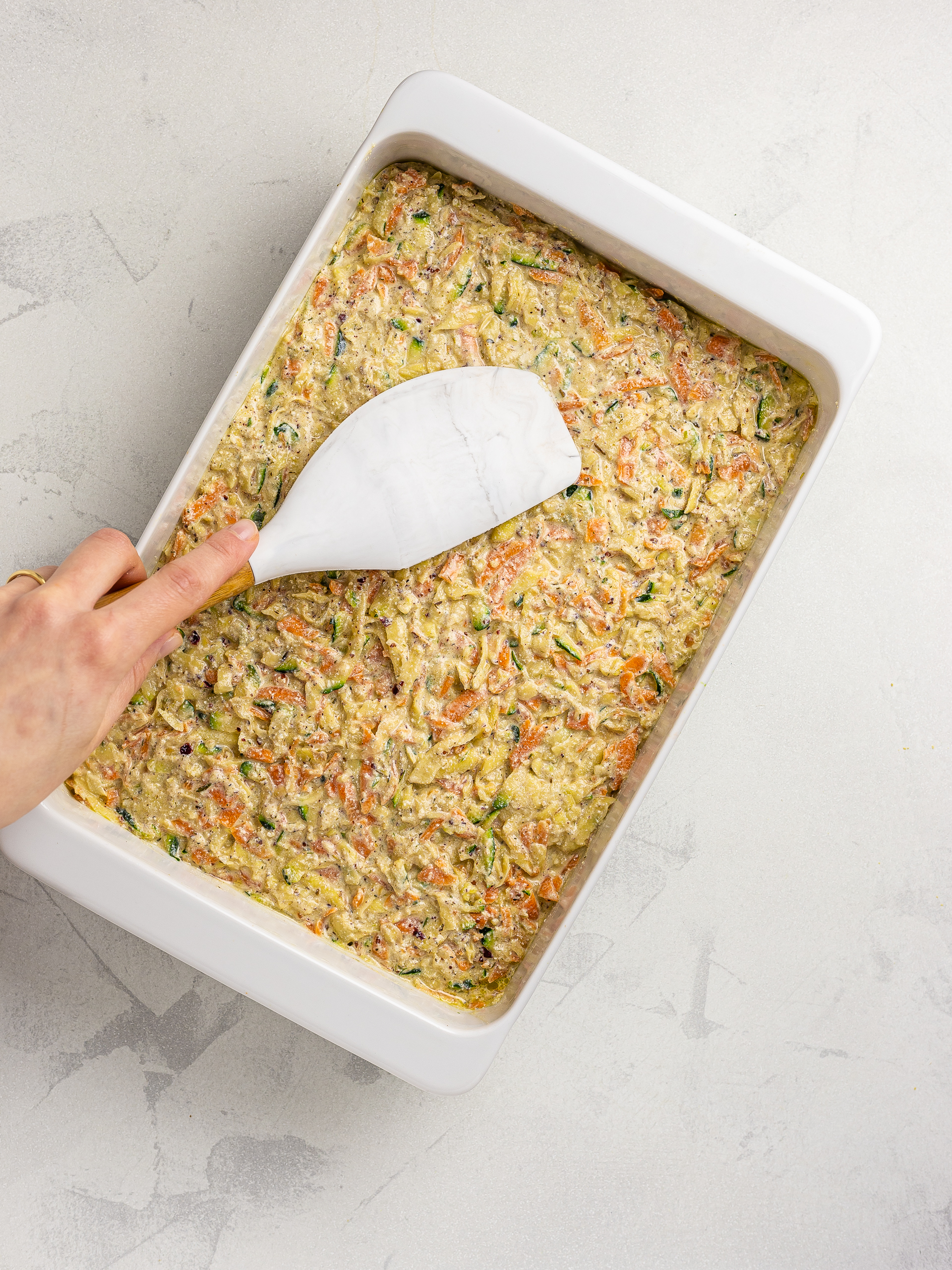
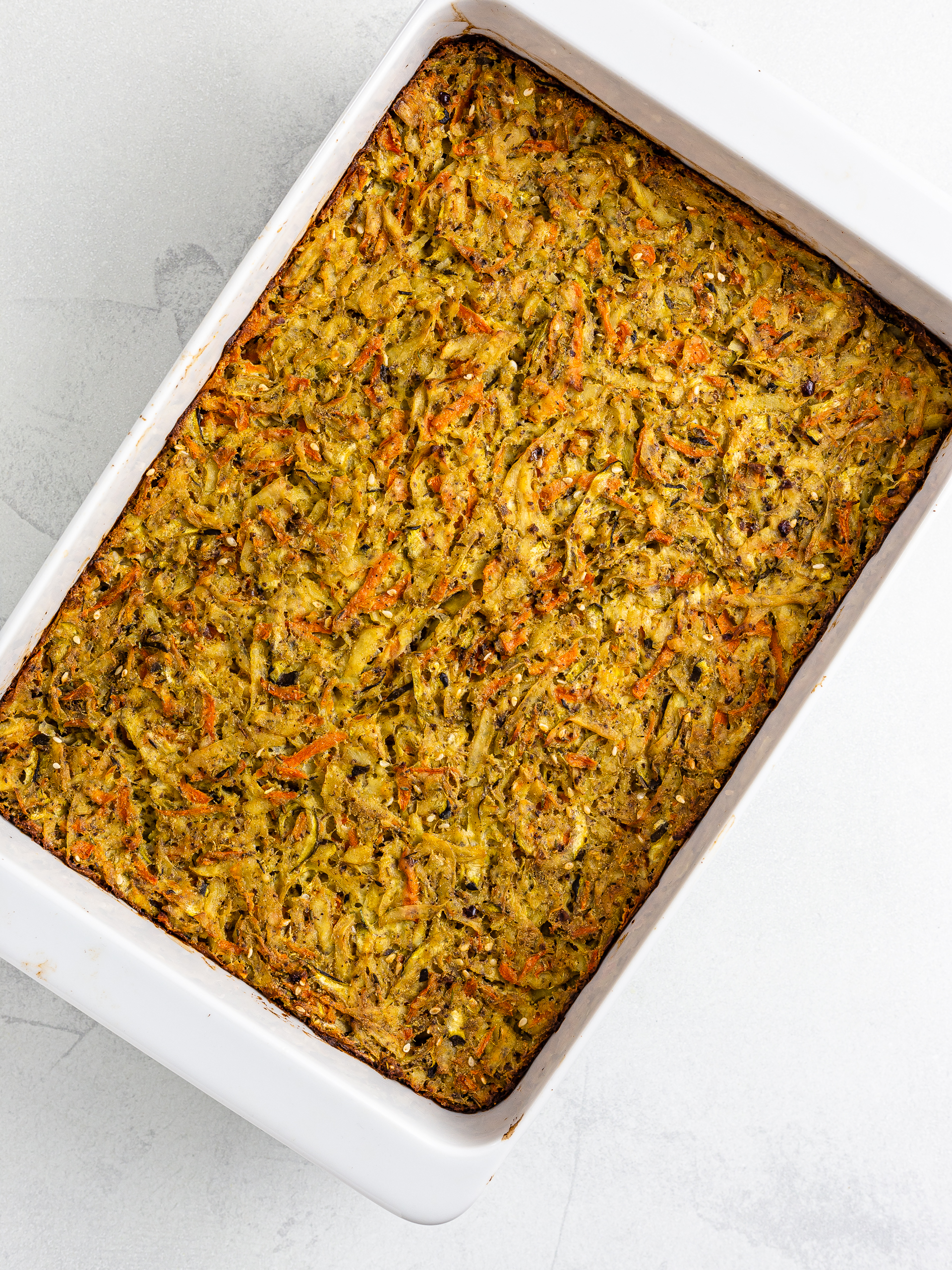
Tips
You can also add oregano and marjoram to the Za'atar spice mix.
